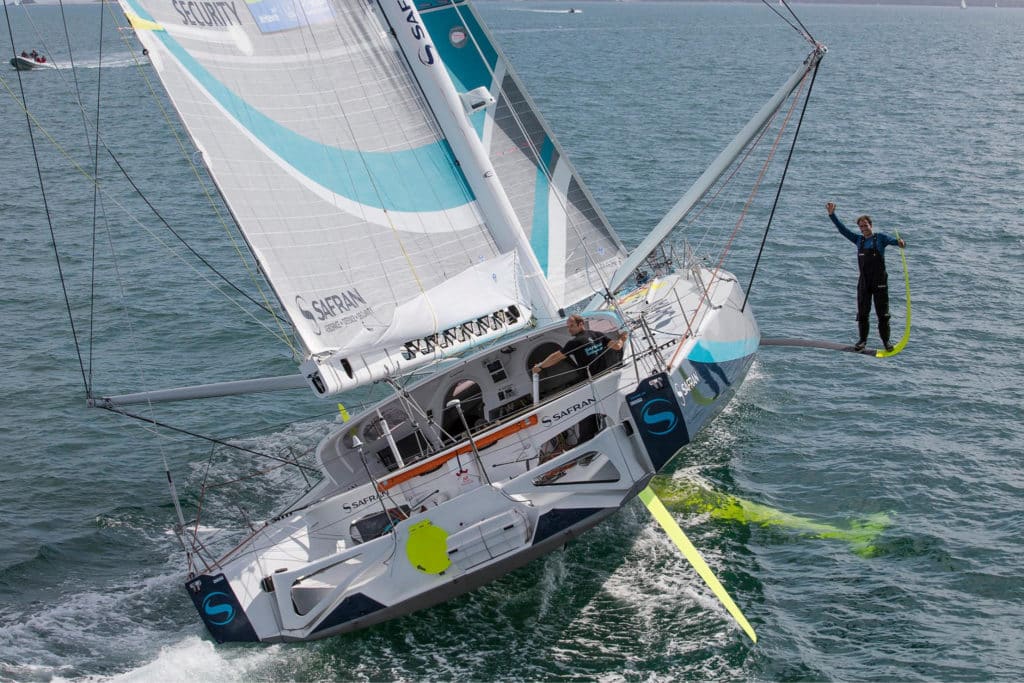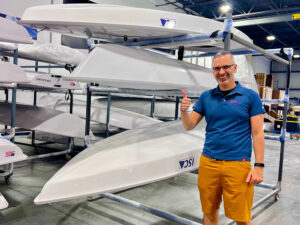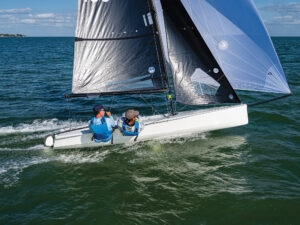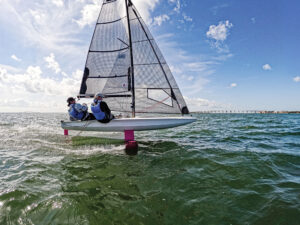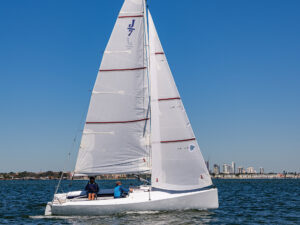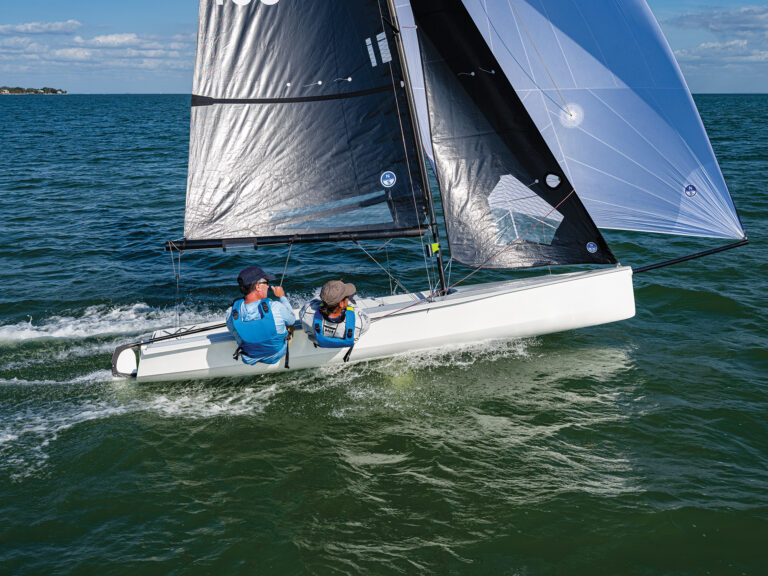At the beginning of 2014, Safran announced that it would continue its ocean racing sponsorship with the young skipper Morgan Lagravière, 27, at the helm of a new Open 60 racing yacht under Imoca (International Monohull Open Class Association) standards. The 60-foot boat was launched on March 5, 2015, in the Breton port of Lorient.
With this new ocean racer, Safran intends to set the pace against six other new-generation boats that will be competing in the Vendée Globe 2016 round-the-world solo race. The new Imoca class prototype was designed from the ground up to be compact, maneuverable and as light as possible, so it can ride the waves… In other words, perfect for a solo race!
A team of sponsors To maintain its position as the engine behind this new generation of Imoca class monohull racing yachts, the Safran Sailing Team teamed up with Banque Populaire, also a customer of the naval architects Verdier/VPLP, and with Hugo Boss. Through this partnership, they were able to pool development costs and resources, and share the results of advanced hydrology studies.
“The idea is to unite our efforts and our resources to maximize the results of our aerodynamic and hydrodynamic research, giving us the highest-performance hulls in the class. We expect to see a real competitive advantage,” said Gérard Le Page, CEO of Safran Sailing Team.
A new generation of Imoca class boats
The new Safran Imoca Open 60 class ocean racer (60 ft/18.28 meters), like the original boat, is the product of naval architects Vincent Lauriot Prévost, from the firm VPLP, and Guillaume Verdier, coupled with the technological expertise of Safran and the maritime know-how of the Safran Sailing Team.
Far more powerful than its predecessor, the new boat features a much wider hull, with more “torque” when it lists, a guarantee of higher performance. The center of gravity (mast and keel) was moved back to lighten the forward section and make sure the boat doesn’t have to plow through the water. Another difference is in the foils, which mark a significant evolution on this new generation of Imoca Open 60 class vessels.
The bow is also larger, which also lightens the forward section and maintains a balance with the bottom, even when the boat lists.
Monotype keel and mast
Imoca standards limit the number of appendages to five: a keel, with an imposed fin, two center boards, and two rudder blades. The naval architects studied the rudder blades in depth, to come up with an optimized shape and weight for maximum efficiency.
For the mast, architects have to choose between two standard types: a conventional mast with spreader arms, or a rotating wing mast, and it’s the latter that Morgan Lagravière chose for the new Safran. This choice determined the shape, cut and weight of the sails. The architects, skipper and “sailmaster” teamed up to develop the sails.
Foils
The foils are appendages that allow Imoca class monohulls to increase top speed by nearly two knots, from reaching to sailing before the wind. For a round-the-world race, an increase of two knots means cutting the time by two days – and the record they’re all shooting for is the 78 days set by François Gabart in the last Vendée Globe! Naval architect Vincent Lauriot-Prévost explains: “The stronger the wind, the more lift provided by the appendages (keel and foils), and the lighter and therefore faster the boat.”
Currently, only one other IMOCA 60 has added foils in exchange for daggerboards, Banque Populaire being the second team to do so.
Keep an eye out for Safran during Rolex Fastnet Race on the race tracker.
